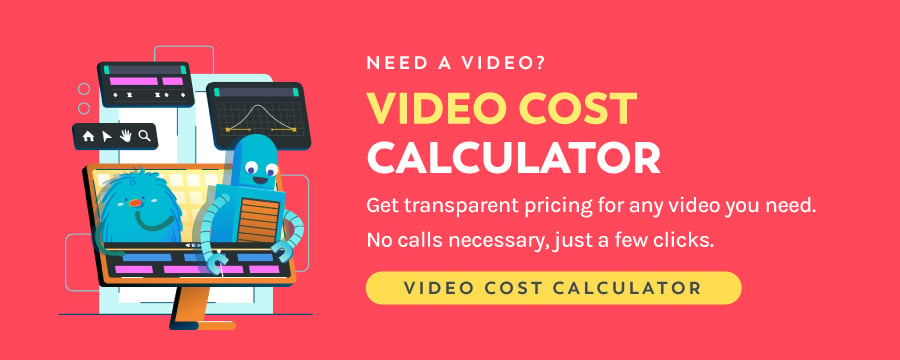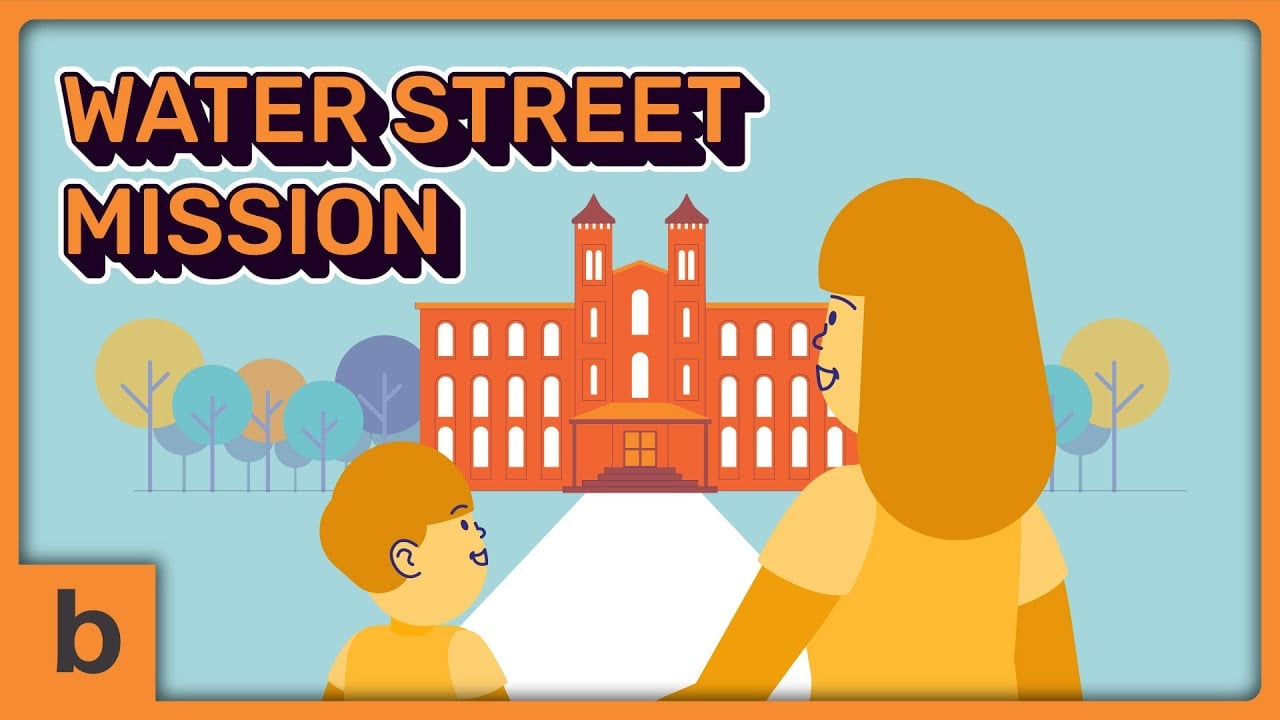Table of Contents ×
- 1 What Is a Hidden Cost in Explainer Video Production?
- 2 Why Do Hidden Costs Happen in Explainer Video Projects?
- 3 What Are Some Real Examples of Hidden Costs People Run Into?
- 4 What Questions Should I Ask to Avoid Hidden Costs?
- 5 What Should Be Clearly Outlined in the Contract or Proposal?
- 6 What About Working With Breadnbeyond?
- 7 Mini FAQ: Hidden Costs & Explainer Video Projects
Avoiding hidden costs when hiring an explainer video studio starts with knowing what to look for. A clear scope of work and open communication from day one can save you from budget surprises later.
In my experience running a studio, hidden costs usually sneak in when expectations aren’t aligned from the start. Clients often assume certain things, like extra revisions or scriptwriting, are included, while the studio may see them as add-ons.
What Is a Hidden Cost in Explainer Video Production?
A hidden cost is any additional fee that wasn’t clearly communicated in the initial quote or scope of work.
In explainer video production terms, these can range from subtle extras like scriptwriting and voiceover revisions to bigger surprises like licensing fees for music, charges for rescheduling timelines, or extra costs to receive raw project files.
The tricky part is that hidden costs don’t always come from shady practices. In many cases, they result from assumptions made by either the client or the studio.
For example, you might assume threerounds of revisions are standard, but the studio might only include two. Or maybe you expected the video in multiple aspect ratios (landscape, square, vertical), but the studio only quoted for a simple one and the rest will cost extra.
These surprise fees often show up when there’s a lack of clarity around deliverables, responsibilities, or limitations. That’s why it’s important to ask detailed questions before signing anything.
A transparent studio should be happy to walk you through what’s included, what’s optional, and what could lead to extra charges.
Why Do Hidden Costs Happen in Explainer Video Projects?
Hidden costs usually happen because of unclear communication, undefined scope, or mismatched expectations between the client and the studio. In other words, they appear when assumptions replace specifics.
A report from Hightale stated that 44% of creative projects are delivered late, over budget, or incomplete due to broken processes and miscommunication.
That’s why clarity from both sides, you and the studio you’re going to work with, is key to keeping your budget predictable.
I can’t say that it’s a bad intention, though. It’s just that not everything was discussed or documented upfront.
A studio might assume you’re providing the script, while you thought they’d write it. Or maybe they included one voiceover option, but you wanted three-person dialogue.
These types of misalignments can lead to extra charges once the project is underway.
Another common source is vague revision policies. If the agreement says “limited revisions” but doesn’t specify how many, you could get charged after just one or two rounds of feedback. Likewise, if the timeline isn’t clearly defined, a rush request later on might come with an added fee.
Lastly, hidden costs can pop up if you’re not aware of licensing terms, like who owns the final video, or whether you can use the music in ads or just on your website.
These are details that often get glossed over, but they can have financial implications if you need more usage rights later.

What Are Some Real Examples of Hidden Costs People Run Into?
Even with the best intentions, many clients find themselves facing unexpected costs during explainer video projects. These hidden fees often show up in ways that seem small at first, but they can quickly add up.
Below are some common real-life examples we’ve seen (or heard about from clients who came to us after a bad experience):
1) Voiceover Retakes
Most studios include one take of voiceover in the quoted price. But what if you want to change the tone, pronunciation, or script after recording?
Retakes can cost extra, especially if a professional VO artist needs to be rebooked. Always ask how many takes are included and what triggers a new fee.
2) Script Revisions Beyond the Limit
You may think script edits are unlimited, but many studios cap the number of revision rounds (e.g., two rounds max).
Once you hit that limit, further changes are billed hourly or at a flat rate. This catches people off guard, especially if internal approvals take time or different stakeholders give late feedback.
3) Rush Fees
Need your video faster than the standard timeline? That often comes at a premium. Studios may charge 20-50% more to rearrange their schedule or work overtime.
If you’re on a tight deadline, clarify any rush fees upfront, even if you think you won’t need to use them.
4) Multiple Video Formats (Landscape, Square, Vertical)
You might receive your final video in 16:9 format, but you need a square version for Instagram or a vertical one for TikTok.
Many studios treat these as separate deliverables and charge extra. If you plan to use the video across multiple platforms, ask early whether resizing is included.
5) Music Licensing
Stock music tracks often come with basic usage rights (e.g., online only). If you want to run the video in paid ads, on TV, or in international campaigns, you may need an upgraded license, which costs more. Some clients don’t find this out until after their campaign is live and flagged for copyright.
6) Project File Access
Some clients assume they’ll receive the editable source files (e.g., After Effects, Illustrator). But many studios only deliver the final video, unless otherwise agreed upon. If you want access to the raw files for future edits or localization, ask early and expect an additional fee.
7) Style Upgrades or Custom Character Design
You may start with a “standard” art style, but later realize you want more customization, like a character that looks like your CEO or brand mascot. Custom illustrations or style changes are often billed separately and can increase production time and cost.
8) Translation or Localization
Planning to use your video in multiple languages? Great idea!
But translations, subtitle syncing, or multiple voiceover versions typically aren’t included in the base price. Some studios offer localization services, but they’re usually extra.
A while back, we produced a video for The World Bank Group in Thailand that required the voiceover in their native language, but still included English subtitles.
Since our base package only included one language for voiceover and subtitles, we clarified the need for bilingual support early on and adjusted the scope accordingly to avoid any unexpected fees down the line.
Find more videos at the Breadnbeyond YouTube channel

What Questions Should I Ask to Avoid Hidden Costs?
The best way to avoid hidden costs is to get specific. Don’t be afraid to ask detailed, even “obvious” questions, from the first very meeting. A reputable explainer video studio should welcome this kind of clarity.
Strategy Business stated that 91.5% of all projects exceed their original budget or schedule, and only around 1% finish on time, on budget, and deliver full benefits.
In almost every project, overruns are the norm. But with tight contracts and transparent pricing, small video productions can avoid becoming part of that statistic.
Asking those “uncomfortable” questions upfront helps you to gain a much clearer understanding of what you’re paying for, and you’ll avoid surprise costs down the line. It’s not just about protecting you. Here are the key questions to ask before you sign anything:
- What’s included in the quoted price? Does it cover scriptwriting, storyboarding, voiceover, animation, background music, sound effects, and final delivery?
- How many revision rounds are included? Ask for a clear number, and find out what happens if you need more.
Who owns the final video and assets? Do you get full commercial rights? Can you access the project files (like .AE or .PSD), and is there a cost? - Are there any licensing or usage restrictions? Make sure any music, voiceover, or illustrations used are licensed properly, and clarify where you can publish the video (e.g., social media, ads, broadcast).
- Are there any rush fees or charges for deadline changes? If your timeline shifts or speeds up, will it cost more?
- Will I receive the video in multiple formats/sizes? If you need landscape videos, square videos or vertical videos, check if that’s included or considered extra.
- Are there costs for additional characters, scenes, or complexity? Sometimes the quote is based on a simple style. Any added complexity might change the price.
What Should Be Clearly Outlined in the Contract or Proposal?
A well-written contract or proposal should act as a roadmap for the entire project, setting expectations for both the client and the studio. Here’s a breakdown of what to look for and why each part matters:
1) Scope of Work
This should clearly define what the studio is delivering and what’s included in the project.
Is scriptwriting included, or are you expected to provide it? Will the team handle storyboard creation, voiceover sourcing, music selection, and sound effects?
If any of these are excluded or marked as “optional,” you could end up paying extra later. A detailed scope keeps everyone aligned on responsibilities.
For example, when working with a nonprofit client like this one for Water Street Mission, we made sure to list every deliverable (final video, social cutdown, YouTube thumbnail) in the proposal. That way, when they asked for a vertical cut of the same video later on, it was already scoped and budgeted.
2) Timeline & Milestones
Look for a breakdown of each production phase, including when you’ll receive drafts, when your feedback is due, and when the final video will be delivered.
Timelines should also account for revision rounds. Ask if there are any fees for last-minute changes, delays on your end, or rush requests. These are common sources of hidden costs.
3) Revision Policy
Don’t settle for vague terms like “limited revisions.” Make sure the number of revision rounds is clearly listed for each stage, such as script, storyboard, animation, etc.
Also, ask what happens if you need more revisions. Are they billed hourly or by phase? Some studios also distinguish between minor tweaks and major changes; knowing this difference can help you plan better.
4) Pricing Structure
The proposal should include a transparent pricing breakdown, ideally itemized so you can see what you’re paying for.
This might include base cost, voiceover options, translation fees (if applicable), aspect ratio adaptations (e.g., square or vertical formats), or rush delivery fees. A clear pricing table helps you anticipate any potential extras based on your needs.
At Breadnbeyond, we make it a priority to outline every cost clearly from the start. No vague terms, no fine print.
Our proposals include a full scope of what’s included and highlight optional add-ons you can choose based on your goals and channels.
Whether you need a single 60-second video or multiple versions for different platforms, we make sure everything is quoted up front so there are no surprises down the line.
5) Ownership & Licensing
This is a big one. You need to know who owns the final product.
Do you have full commercial usage rights? Can you repurpose the video for ads, TV, or other platforms? Are any third-party assets used in the video (like music or illustrations), and are they licensed for your specific use?
Some studios charge extra for extended licenses or usage beyond digital platforms.
6) Deliverables
What exactly will you receive at the end of the project? Typically, you should get the final video file in MP4 format, but you might also need other formats or sizes for social media, presentations, or vertical platforms like TikTok.
Some clients assume they’ll receive raw project files (e.g., Adobe After Effects), but studios often charge extra for that, or don’t provide them at all unless specified.
7) Payment Terms
Look for a clear payment schedule, often split into milestones, such as 50% upfront and 50% upon final delivery, or ⅓ upfront and ⅓ upon final delivery, with the remaining ⅓ due upon completion.
The contract should also explain what happens if you cancel mid-project, whether there are late fees, and how additional charges will be handled if the project scope changes. This protects both you and the studio from financial misunderstandings.

What About Working With Breadnbeyond?
At Breadnbeyond, we keep things simple, straightforward, and stress-free because your budget shouldn’t have plot twists.
According to a survey conducted by Runn, 35% of project failures in 2021 were due to budget issues, with over half of the organizations reporting frequent overruns. That’s why we include buffer planning and fully scoped costs upfront, so we’re all prepared.
We’ve helped thousands of brands tell their stories with explainer videos that are not only effective but also transparently priced. No guesswork, no “surprise” fees halfway through.
Mini FAQ: Hidden Costs & Explainer Video Projects
Do all studios charge extra for raw project files?
Not all, but many do. At Breadnbeyond, source files (such as Adobe After Effects or Illustrator files) aren’t included in the base price by default because it takes time for us to compile them, but most clients never really need them. If you do need them, we can include them in your quote upfront.
Is music and voiceover licensing always covered?
It depends on the client’s request. Breadnbeyond handles standard royalty-free music and commercial-use voiceover licensing as part of your base package, and we’ll let you know if your project requires extended rights.
Can I change the script or idea after the storyboard is done?
Technically, yes. But it usually adds cost, since it means redoing previous steps. That’s why we include two rounds of script revisions before moving forward, so changes are made when it’s still easy (and free).
What if I need multiple videos with the same visuals but different text or voiceovers?
That’s a common request for multi-language or regional campaigns. While we offer localization-friendly packages, we’ll write the scope properly so you know the full cost upfront. Different texts cost less, and redoing voice-overs may change the overall duration of the video since not every language has the same length when translated.
How long is a typical explainer video project, and does it affect cost?
Most projects take 4 to 5 weeks, depending on their complexity and the speed of feedback. Short timelines may require rush fees, but we always let you know before applying them.
What if my internal team delays feedback? Do I get charged more?
We understand delays happen. While we don’t charge penalties, extreme delays may (in fact, it’s most likely to always do so) affect scheduling. We include this in our terms to keep everything on track and fair for everyone involved.





